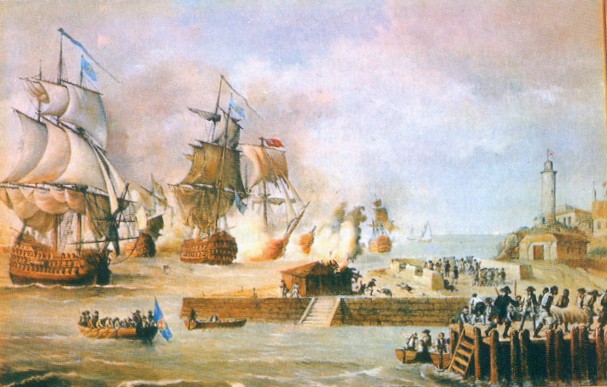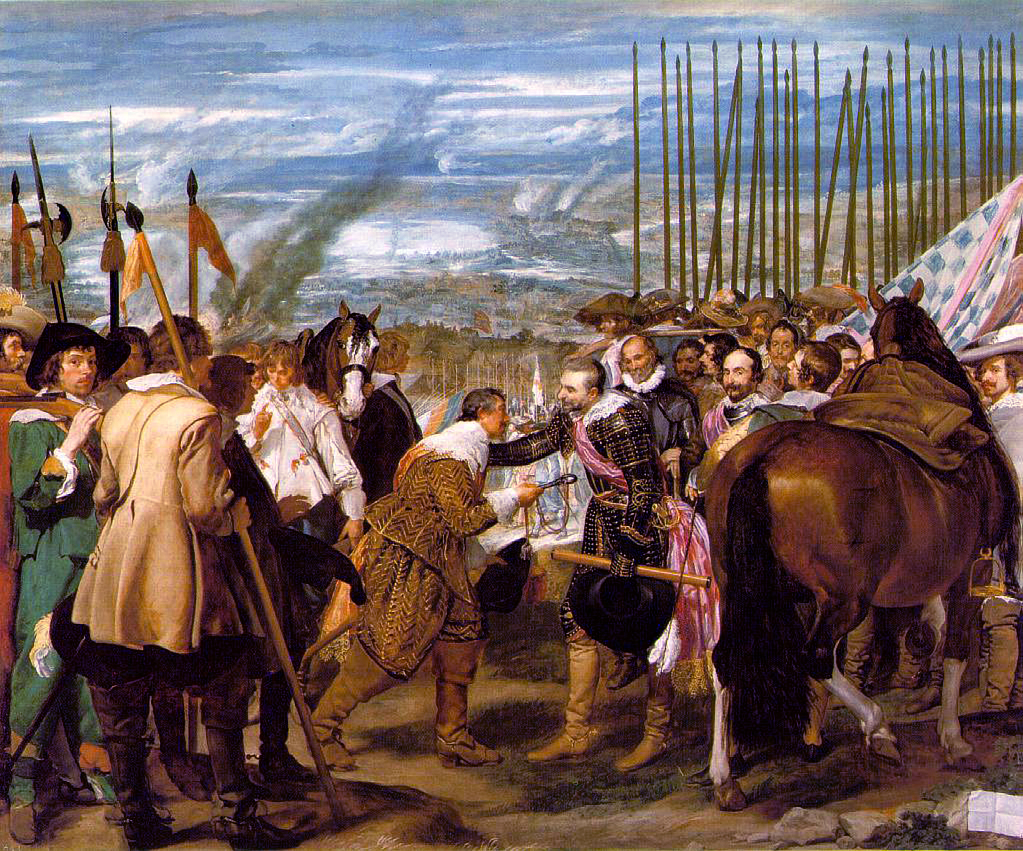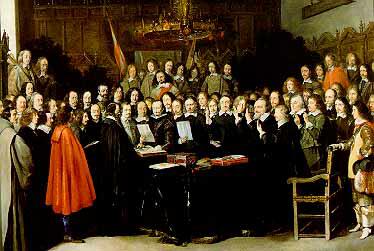
The 80 Years War Part III
The Wind Shifts
After Spain's success and the death of the leaders of the Low Countries rebellion, Elizabeth feared Philip II would try to isolate England, so decided to intervene in favour of the rebellion, with the aim to wear out Spain.

The Queen contributed 6000 soldiers of her army, under the command of the Count of Leicester. Despite the fact that the British army was completely defeated, the help given by Elizabeth, along with piracy and destruction of coastal cities provoked the Spanish king's attempt to invade England with his invincible Spanish armada. It would be the hardest lesson the Spanish would learn.
While Spain was involved in war with England, and then with France, -where Alessandro Farnese died in 1592-, the States-General decided not to name a new governor take in their hands their own sovereignity, creating the Republic of the United Provinces
After William of Orange's death, his son, Maurice of Nassau-Orange became the commander of rebel troops, proving to be a fearsome opponent for the Spanish armies. In 1590 the Dutch rebels had the chance to recover while empty treasury of the Spanish crown caused a number of mutinies which limited the the imperial army's capacity. In the same year the rebels took over Breda in a surprise attack. In the following year they occupied the provinces of Gelderland and Overijssel and in 1594 they conquered the province of Groningen.
In 1595 Philip proclaimed Albert of Austria as governor of the Low Countries. Albert was married to the kings daughter, Isabella Clara Eugenia, and when the king died three years later, they became sovereigns of the Low Countries.
In 1600, the Dutch army, reformed by Maurice of Nassau-Orange, confronted the Spanish armies in the Battle of Nieuwpoort, the first open field battle that the rebel forces beat the Spanish armies.
Twelve Years' Truce
After the defeat of the Catholic league and their Spanish allies, the new King of France, Henry IV extended his influence in the south of Germany, the north of Italy and Switzerland until in 1601 the Spanish Road falls in his hands, effectively cutting all land communication between Lombardy and Flanders.
In 1603 Queen Isabella died, giving way to peace with England, which put an end to the help that the British gave the Dutch. In the same year Ambrogio Spinola was appointed as commander of the Spanish troops which had been busy blockading Ostend for two years. Isabella's brother, Philip III rose to power.

Spinola promised to re-conquer the city within year, and which he achieves in 358 days. For this he is named General Maestro de Campo (inferior only to the Captain General) and the following year he earned the rank of Treasury Quartermaster, meaning that he took control of the finances of the entire army.
The Spanish school of thought was of the mind that a truce with the Low Countries would be their best option, but the Dutch rejected the offer, as their situation was much more advantageous than in the past. But after the occupation of Ostend the Spanish course of action was to restart the campaigns. In 1605 and 1606 the Flanders army opened a breach in the defensive barrier built by the Dutch and managed to take several cities. However they are unable to penetrate the rebel territory too deeply. The lack of payoffs in the army made it impossible to continue with the campaign.
In December, 1606, the State Council advised the king to leave Flanders. The Spanish immersion in war had gone on for far too long. However, we shall never know whether the king heeded the Council's warnings, as the Dutch made an unexpected offer to put a stop to the hostilities, which ended in 1607. However the negotiations went on until April 1609, year in which the Twelve Years Truce was signed.
The War Resumes
The Twelve Years Truce ended effectively in 1622. Three years later Maurice of Nassau-Orange died during an intesive Spanish siege of Breda. His half brother Frederick Henry of Nassau took the command of the troops, but the Genovese commander of the Spanish troops, Ambrogio Spinola managed to take the city.
Victory was sweet, but not very long as the the scales tipped to the Dutch side. Frederick Henry of Nassau conquered 's-Hertogenbosch in the North of Brabant, which was believed to be impregnable. This loss was a heavy blow for Spain. Three years later Frederick Henry overtook Venlo, Maastricht and Roermond. However his attempts to attack Antwerp and Brussels failed.
The Flemish population failed to give adequate support to the Dutch due to religious differences, which was very disappointing. The Dutch were Calvinists, while the Flemish remained Catholic.
The Last Chapter
All sides fighting this war came to the realization that neither would Spain manage to restore their power over the territories north of the Mosa Delta and the Rhine river nor would the northern United Provinces conquer the southern provinces. In 1639 a Spanish fleet arrived in Flanders with an army of 14,000 men in order to contribute with the operations in the north. However, it turned out to be an intensive Spanish defeat. This Dutch victory not only had consequences in the 80 Years War, but it was a benchmark of Spain's decline as a Maritime power.

In 1643 Philip IV gave orders to begin definite peace negotations.
In January 30, 1648, the Treaty and Münster was signed, effectively putting an end to the 80 Years War (of course, in that time it was known as the Flanders War). This treaty was signed by Spain and the United Provinces (it was a part of Peace of Westphalia). The Republic of the United Provinces was recognized as an independent state and kept many of the territories it had conquered during the war.
If you want to know what happened before, go to Part I or Part II
